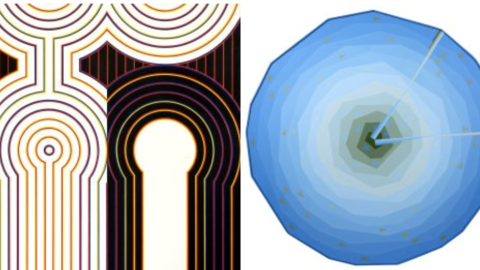The Mathematical Institute is delighted to be hosting a major exhibition of artist Kathleen Hyndman's mathematically inspired work.
The exhibition of drawings and paintings illustrate Hyndman’s desire to see nature and the world around her in mathematical sequences and geometrical patterns. Golden Section proportions and angles, prime numbers as well as Fibonacci numbers and eccentric constructions are all used to create works achieving a calm and balanced unity.
Nonlinear dynamics of passive and active particles in channel flows
Abstract
The motion of a particle suspended in a fluid flow is governed by hydrodynamic interactions. In this talk, I will present the rich nonlinear dynamics that arise from particle-fluid interactions for two different setups: (i) passive particles in 3D channel flows where fluid inertia is important, and (ii) active particles in 3D channel flows in the Stokes regime (i.e. without fluid inertia).
For setup (i), the particle-fluid interactions result in focusing of particles in the channel cross section, which has been exploited in biomedical microfluidic technologies to separate particles by size. I will offer insights on how dynamical system features of bifurcations and tipping phenomena might be exploited to efficiently separate particles of different sizes. For setup (ii), microswimmers routinely experience unidirectional flows in confined environment such as sperm cells swimming in fallopian tubes, pathogens moving through blood vessels, and microrobots programed for targeted drug delivery applications. I will show that our minimal model of the system exhibits rich nonlinear and chaotic dynamics resulting in a diverse set of active particle trajectories.



